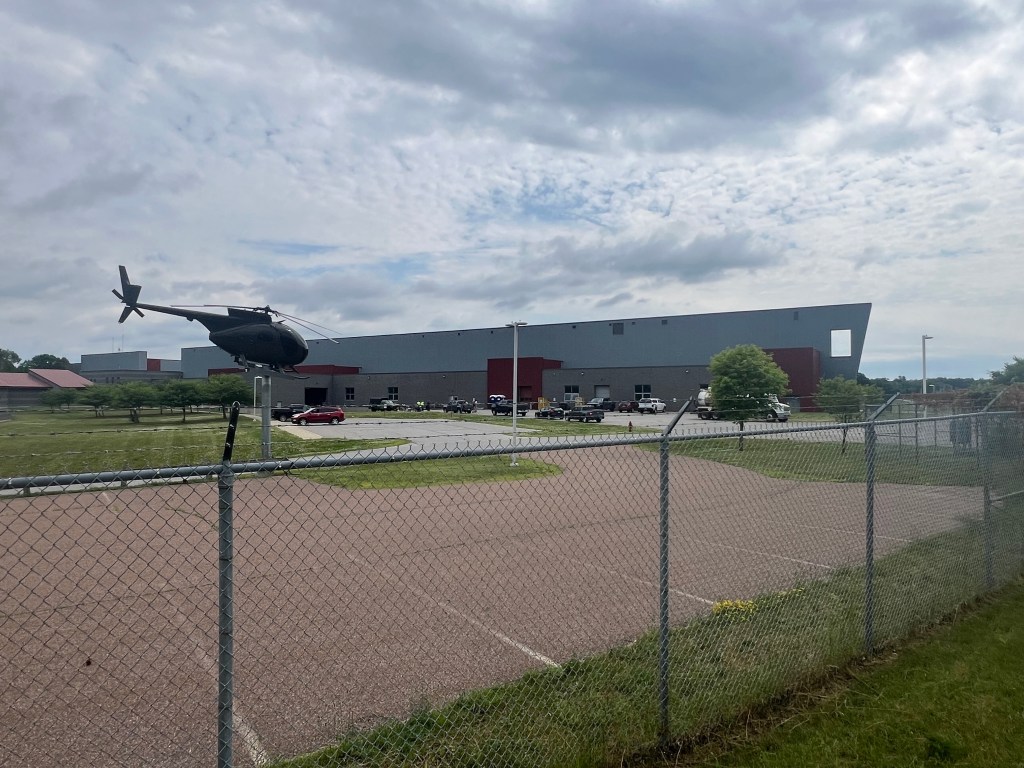This story by Liberty Darr was first published in the Other Paper on Sept. 19.
The levels of PFAS in effluent at the South Burlington Wastewater treatment facility have been steadily declining since a toxic chemical spill in June.
The 800-gallon chemical foam spill at the Vermont National Guard’s aviation facility that partially leaked into the city’s treatment facility have leveled off after spiking at 2,000 parts per trillion.
The foam, a fuel fire suppression liquid that contains perf- and poly-fluoroalkyl substances known as PFAS, which are linked to many known health problems, leaked June 20 and by the next day had already made its way to the city’s treatment facility. A post-incident investigation found that a sealed rubber gasket at the base of the holding tanks ruptured, causing the release.
Approximately 650 gallons of the foam were captured in the Army Guard facility by an environmental remediation company. Up to 150 gallons of the foam entered the wastewater system owned by the Guard through a floor drain and eventually made its way to the city’s Airport Parkway Wastewater Treatment Facility.
“By day four after the event, it appeared that we actually captured the majority of the material in the treatment plant,” Col. Jacob Roy with the Vermont Army National Guard said at a briefing to the city council earlier this month. “We basically started from the treatment plant back through the municipal system, cleansed and flushed the municipal lines up Shamrock Road, from the pump station of Shamrock Road all the way back onto our property, and then worked our way back into the building.”
Testing done in the Winooski River downstream of the Airport Parkway treatment facility discharge point also showed initial elevated PFAS in the river immediately following the event, but a sharp reduction in subsequent sampling.
Since the incident, Roy explained that the Guard has done more than 50 rounds of sampling between the wastewater treatment plant, the river and on-site treatment systems at its facility. Just four days after the incident, sampling showed no detection of PFAS coming out of the treatment plant.
Since that point, the Guard team has removed all the Aqueous film-forming foam (AFFF) holding tanks and dismantled the entire AFFF system.
“Currently, there is no more AFFF material that is on our installation at that facility, and our intent is not to bring any back,” Roy said. “The Army is working through trying to find replacements for it, but our plan at this point is to try to develop a water-only solution to the facility, which is all we have at this point right now. So long term, we’re looking at replacing the entire sprinkler system anyway, because now it’s 20 years old.”
The Vermont Army National Guard currently has roughly 60,000 gallons of containment water being held in on-site wastewater storage tanks that is treated with granularly activated carbon. In a memo to city councilors, the city’s water quality superintendent Bob Fischer said the Army Guard initiated contact with the state’s water quality division two weeks ago on disposal of the material into the South Burlington collection system if the laboratory testing results show that carbon treatment has removed the PFAS compounds.
The other option would be for the National Guard to truck the water to a waste-acceptable disposal facility in Idaho.
No release of the treated water will be allowed without sign-off and analysis from the Vermont Department of Environmental Conservation and relevant city officials, Fischer wrote.
Roy said the Guard is also not being asked to do any additional river or effluent testing. The final tests were completed in July.
Read the story on VTDigger here: Testing shows declining PFAS levels after National Guard foam spill.

